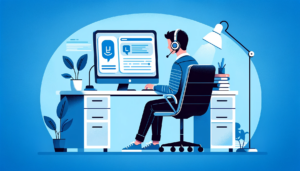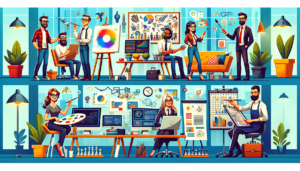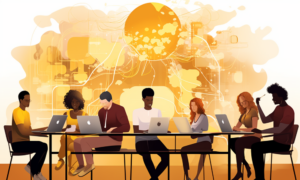Industry insights: Can AI-enabled skills data finally deliver personalized learning experiences at scale?
- 4 Min Read
A round-up of industry insights on creating personalized learning experiences, including the impact AI and ML-enabled skills data on delivering engaging L&D at scale.
- Author: HRD Connect
- Date published: Oct 26, 2023
- Categories

The landscape of Learning and Development (L&D) is undergoing a rapid evolution and has taken a heavy shift towards personalized L&D. This transformation is rooted in the acknowledgment that employees exhibit diverse learning preferences and needs, rendering the traditional one-size-fits-all training approach obsolete. In this article, we will delve into this trend, exploring the latest industry best practices and strategies for creating personalized learning experiences. We will uncover the benefits it brings to the organization, the impact of AI and ML, and the practical strategies that HR and L&D leaders can employ to implement personalized learning effectively.
The power of personalized learning: Tenure, profits, inclusivity
Investing in a shift to delivering personalized learning experiences, when executed properly, will deliver positive results for your organization, at the people and business level. 45% of employees would stay at a company longer if it invested in their learning and development and companies with comprehensive training programs have a 24%, according to research published on ATD. It also supports the creation of a truly inclusive work environment that caters to diverse learning preferences.
Personalized learning also allows for a mix of training methods and e-learning content, ensuring each team member can grasp and retain information effectively. To put this model into practice, the article also breaks down a clear six-step pathway to creating a personalized learning experience, starting with assessing individual needs and moving through to strategies including microlearning and self-directed learning.
Basing personalized learning on skills data
Beyond these six steps, organizations should power personalized learning experiences through skills data. In a podcast interview with David Green, Loïc Michel discusses how to use skills data to improve the talent experience, and by extension, the learning experience. The article emphasizes that skills data is foundational to successful talent management as it helps HR leaders understand their workforce, mobilize their workforce, and anticipate the transformation of their workforce. By using skills data, organizations can better understand the skills gaps they have now and in the future and can work to close those gaps through internal mobility, personalized learning experiences, and workforce planning.
Internal mobility is a powerful tool for improving the talent experience, as it helps organizations close skills gaps, increase employee engagement and retention, and prepare for future workforce transformations. By providing personalized career development opportunities and leveraging skills data, organizations can create a more engaging and agile talent experience for their employees that best supports their learning and development needs.
AI and ML offer scale
The episode also highlights the role of AI and technology in solving the complexity challenge of skills data. Organizations can use AI to create a comprehensive and adaptive skills framework that matches employees with the right opportunities in real-time, highlighting gaps and identifying specific skills employees can develop to step into such roles, and recommending tailored learning plans based on the individual’s learning preferences. This level of automation allows organizations to deliver personalized learning experiences at a scale that previously was simply not possible.
An article from eLearning Industry echoes this sentiment, highlighting the significant role Artificial Intelligence (AI) and machine learning play in creating personalized learning experiences. These technologies can be used to create a custom learning path for each learner, making it possible for them to learn at their own pace and by their specific needs. This personalized approach enables instructors to provide learners with more targeted instruction based on their unique needs, which will ultimately improve learner performance as well as engagement.
In practice, HR and Learning leaders can use AI or ML technology to identify distinct learner profiles of each employee. This can be done by analyzing current and historical data of the learners to determine what type and level of content they are most interested in, as well as how they learn best. Based on each learner’s history and performance, the algorithm recommends the best next action for learners while making sure that they are acquiring knowledge, challenged but not bored, engaged with their work, and fully achieving their goals.
Future challenges for L&D
As new generations enter the workforce, they place clear demands and expectations for skills development and career advancement. Personalized L&D, supported by skills data and people analytics, will be key to creating engaging and effective learning experiences. For global organizations, although technology such as AI and ML improve the ability to efficiently customize content for diverse needs, creating a culture of continuous learning – and integrating the technology that can support this – are core challenges for HR and learning leaders. Examples from best-in-class organizations such as Walmart and Colgate can offer case studies for tackling these challenges.








